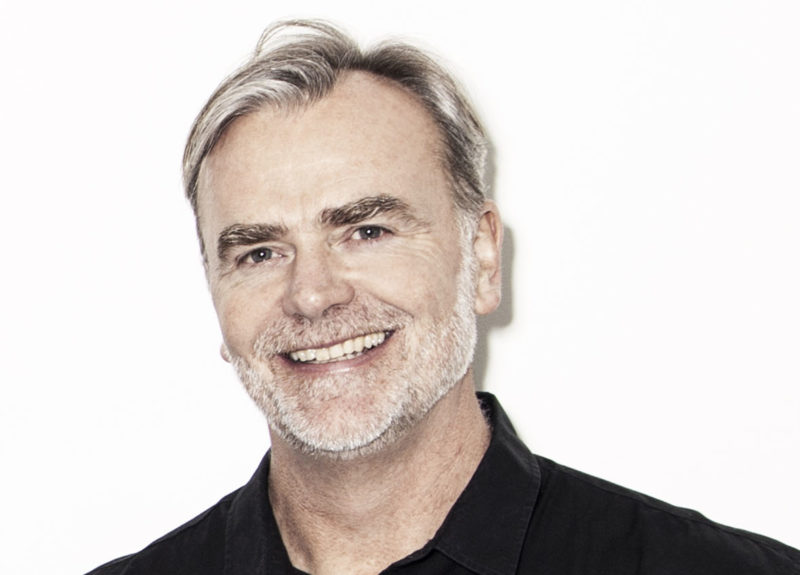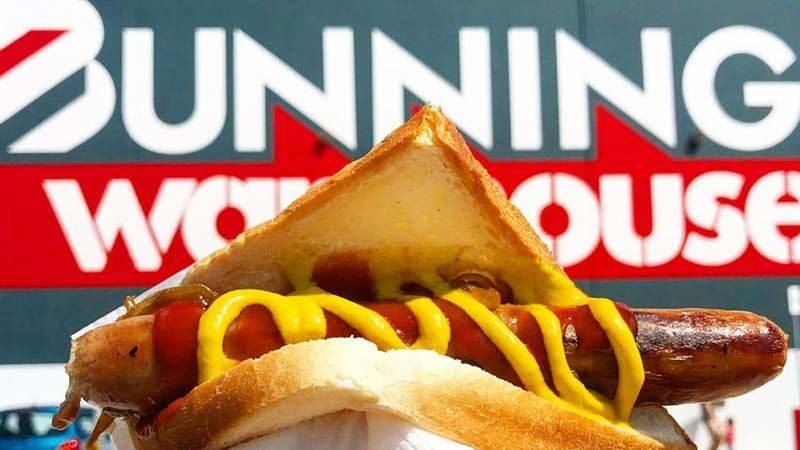Ad of the decade: Industry leaders share their favourite creative work
As the 2010s draw to a close and the industry charges towards 2020, Mumbrella’s Zoe Wilkinson asks a group of industry leaders to reveal their favourite Australian ads from the decade that was.
I have to admit, when embarking on this feature I was concerned that the responses I would get would be obscure, hard-to-find, advertisements that I would have to dig through the deep, dark internet to procure. I was asking the bigwigs for their favourite ads – whether it be for sentimental reasons or the fact that one particular ad represented a change in the industry or Australia at large.
However, the responses I did receive made me feel both pleasantly surprised and foolish, because it seemed so clear – ‘of course they are the favourites – they are some of the best’. But they also marked the great amount of respect the industry holds for some of the groundbreaking work that rolled out in the past 10 years.
To start out are two of the most acclaimed pieces of Australian work from the past decade, ‘Meet Graham’ and ‘Dumb Ways to Die’, selected by DDB’s national chief creative officer, Ben Welsh.

DDB Sydney national chief creative officer Ben Welsh
“My first reaction to being asked to do this was that I’m spoilt for choice. The second was I’d better make sure it was the last decade. So often I find myself making a cultural reference to something that happened before the person I’m talking to was born,” Welsh says.
“Two pieces of work spring to mind immediately: ‘Meet Graham’ and ‘Dumb Ways to Die’. Both performed phenomenally well at awards and became part of culture. I can recall when they first appeared and how excited I was about both.”
For those of you unfamiliar, not that I think there will be many, ‘Meet Graham’ was the striking 2016 work from Clemenger BBDO Melbourne for the Victorian Transport Accident Commission (TAC). The campaign introduced Graham, a man designed to survive car accidents, to show how different human beings would be if they had evolved to withstand the trauma. The campaign demonstrated just how fragile actual human bodies are in the face of road trauma.

Meet Graham, from the Victorian Transport Accident Commission and Clemenger BBDO Melbourne
With an enlarged skull set into his shoulders, a barrel chest, elongated feet and thick skin, Graham and Clemenger BBDO swept the Cannes Lions Festival with 29 awards, and dominated the Clio Awards, D&AD Awards, AC&E Awards and Spikes Asia.
For Welsh, however, Dumb Ways to Die just creeps ahead of Graham as his favourite ad of the decade because it still makes him smile.
“I enjoyed Dumb Ways to Die more. It was traditional – print, OOH and film – at a time when everyone was getting excited at things rather than ads,” Welsh says.
“It may not have won quite as much as Graham, but it was Australia’s first domination of Cannes. And it still makes me smile, so I’m going with that one.”
Uploaded onto YouTube on 14 November 2012, with its catchy jingle and misfortunate characters, it took less than a week for McCann Melbourne’s work for Metro Trains to go viral. The original video reached 2.3m views on YouTube in just 48 hours, making it at the time the most viral Australian brand video of all time. At the time of writing, the view count has surpassed 184m.
Amongst the many renditions of the campaign, Dumb Ways to Die spawned three video games, the most recent of which launched in 2018, and a plush toy range.
It too swept the awards circuit, and you can see the full list of the awards it won in its first year here.
When asked of his favourite ad of the decade, The Monkeys’ co-founder and CEO, Mark Green, also threw a nod in the direction of Dumb Ways to Die, but decided to go with something different.
“There are so many great campaigns to choose from over the last decade. Dumb Ways to Die, NAB Break Up, Aldi Good Different, to name a few. I’m sure these will figure elsewhere so I am going to throw down Hahn’s Pioneering Beering,” Green says.
Launched in 2011, the campaign was a shift in the strategic direction for Hahn, and was the first work created by Publicis Mojo for Lion after it won the account months prior. Pioneering Beering borrowed its theme from the 1980s TV show, Knight Rider, and saw the beer become ‘influenced’ with greatness by the music, being pumped through a glass tiger, poured over trophies and brewed in an Elvis-suit adorned silo.
Green calls it “one of the last great Australian beer campaigns”.
“60 seconds of pure joy from some exceptionally talented Aussies including Micah Walker, Justin Armour and Ruth Belotti. Add Tom Kuntz and we have one of the last great Australian beer campaigns,” he says.

Mark Green selected Hahn’s Pioneering Beering campaign from 2011
Gayle While, CEO of Clemenger BBDO Melbourne, found reflecting on a decade’s worth of work a “wonderfully positive experience”.
“Whilst the level of complexity in what we do continues to increase, taking a step back to review where we’ve been over the decade and how the industry has applied its creativity to tackling business and societal challenges has been a wonderfully positive experience, and one that should fill us all with a sense of optimism for the decade to come,” While says.
For her favourite work of the decade, While selected the ALS Association’s 2018 campaign, Project Revoice, from BWM Dentsu and its PR arm Haystac. Project Revoice saw the two agencies develop a program that used recordings of ALS patients’ voices that could be used to recreate the sound of their voice once they lost the ability to do so.
The campaign began with an emotional film of founder of the ALS Ice Bucket Challenge, Pat Quinn, being given his voice back.
While says that the reason Project Revoice is her favourite, is because it demonstrates exactly what can happen when creativity is used to create practical solutions to human problems.
“Our philosophy at Clemenger BBDO is that ‘Creativity is always the answer’, and Project Revoice is a piece of work that absolutely stands up to that belief. This campaign demonstrated the power that a team of brilliant, creative people can have when they commit to solving a problem by creating something useful,” While explains.
“It’s a meaningful example of applying technology in a way that can positively impact people today and in the future, and I remain in awe of the potential scale of the outcome.”

Clemenger BBDO Melbourne CEO, Gayle While, hopes to see creativity solve more problems in the next decade
While hopes that the campaign will inspire another decade’s worth of work that sees the advertising industry move society forward.
“Through the next decade, I hope we’ll see more examples of how our industry can help move society forward, by bringing our great thinkers together to apply creativity to problems beyond our usual briefs,” she says.

Christina Aventi split her title across Bonds’ The Boys and Berlei’s Boobs
Christina Aventi, executive planning director at BMF, gave honours to Dumb Ways to Die, Project Revoice, The Palau Pledge and Snickers’ Hungerithm. But her final decision was split, with one for the girls, and one for… ‘The Boys’.
“I’m going with a his and hers cut from two of the best Aussie agencies,” she says. “I’m going under with two of my faves with Bonds, ‘The Boys’ and Berlei ‘Boobs’.”
Bonds’ The Boys, created by Clemenger BBDO in 2015, showed two men in hanging chairs representing a pair of testicles, and having contentious conversations with the brain up above.
Aventi says the campaign represents “the good part of Aussie”.
“The Boys is just so Aussie. The good part of Aussie. The twin inner conflicting voices of man done is such a clever way, with a lightness of touch that never falls into the gutter. The battle of top brain vs the other brain below. Obvious, yet fresh. And it clearly lays down the problem for the proverbials if you have pinchy, tatty or tight undies. Special shout out to the support cast of rattan and gold lamé. Why was this not serialised further?” she ponders.
Berlei’s Boobs, created by The Monkeys in 2018, had rubber balls that looked like breasts used in various sports instead of their traditional balls.
Boobs received 130 complaints to Ad Standards, stating it was “graphic”, “offensive”, “degrading”, “inappropriate”, “violent” and “aggressive”. However, the panel disagreed on the grounds that the ad wasn’t sexually suggestive, violent or inappropriate as no real female breasts were shown, and the complaints were dismissed.
For Aventi, the ad brought to life why buying the right bras is the same as buying the right shoes.
“I feel every second of this piece of communication. Great product demonstration, well crafted. The thing is, it is hard to do bra comms without getting into sexualisation space,” Aventi says.
“Here boobs are kicked, punched and tortured. It made me feel like I am my very own boob abuser. This is Berlei at its best. Just like buying the right shoes for sport, so too should you invest in the right bra or you are complicit in bringing on a premature sag. And because of that it made me go buy a decent bra pronto… Berlei of course.
“Strong identification of the problem, powerful insights, well crafted. This kind of work never dates.”
Adam Ferrier, co-founder and chief thinker at Thinkerbell, did not supply me with an ad per se, but noted the meteoric rise of an unwitting brand icon, the Bunnings sausage.
“The sausage sizzle is simple and a cost-neutral activation that runs across the network every week. The sausage sizzle is perhaps the most referenced ‘ad’ in meetings I attend: ‘We need something like the Bunnings sausage sizzle’,” Ferrier explains.
“Could the creator of the Bunnings sausage sizzle please let yourself be known?”

Adam Ferrier noted the marketing strategy of Bunnings as a whole as his favourite of the decade
When I track the Bunnings sausage’s rise to pop culture stardom over the past decade, two moments stand out. The first is the 2016 news story about a man fined $9,000 for flying a drone to Bunnings to retrieve a sausage sandwich from the comfort of his home. The second was just over 12 months ago, when a new safety law was introduced by Bunnings requiring onions to be placed underneath the sausage, after a man complained of slipping on an onion and injuring himself, and the furore that ensued.
The passion on display online and in general pop culture after both these incidents were reported was undeniable.
Although, Ferrier notes, the sausage sizzle does not act alone for the brand. It is backed by Bunnings’ television advertising and ‘old-school catalogue’.
“Over the last decade, clearly the best ad strategy has been the Three Pronged BBQ Skewer strategy of Bunnings with its A. community-focused sausage sizzle, B. staff-focused tv ads, and C. old-school catalogue,” Ferrier says.
“However, if the Bunnings sausage sizzle keeps them coming back, it’s the TV ads that bring in the new users with ruthless, brand-building consistency.”

Ferrier notes that the Bunnings sausage sizzle played a huge role in the retailer’s marketing strategy over the decade
He continues: “I admire these ads as they feel like a window into the soul of Bunnings. I also imagine Lord Byron [Sharp] is rather titillated by their distinctiveness and ruthless consistency.
“Finally the catalogue, I imagine, is like a little Bunnings ad that sits around inside the home. But the beauty of it of course is that suppliers pay Bunnings for the privilege of featuring in this Bunnings ad,” Ferrier says.
Ferrier concludes with a subtle challenge to the industry: “So Bunnings has shown that a sausage sizzle, TV ad and catalogue is the foundation for the most successful ad strategy of the decade. Perhaps others are unnecessarily complicating things?”
I suppose over the next decade, we will just have to wait and see.


2019 is the 9th year of the decade.
2020 will be the tenth and last year of the decade.
Perhaps adjust the headline or just repeat the poll next year for another end of the decade.
No love for the legendary Doug Pitt 🙁
No love for the legendary Doug Pitt? 🙁
We had this discussion in the 90’s. Your side lost and we celebrated on Dec 31 1999. Get over it.
Can be either dude
❤️ the Hahn ad
Pioneering Beering wins for nothing other than the Styx Zadinia cameo
Ferrier has this 100% right. No ad can rival the Bunnings phenomenon